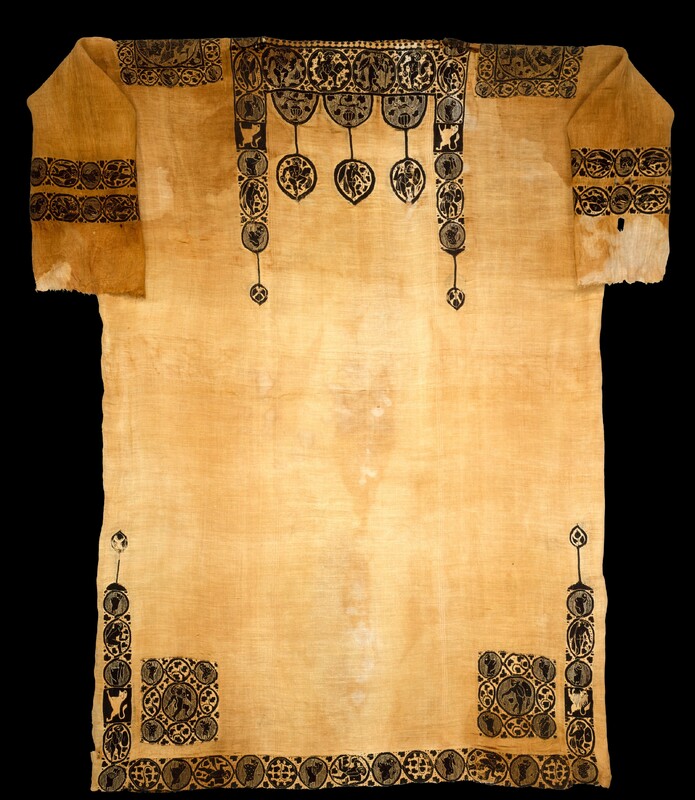Linen tunics
Date:
Fifth to seventh century
Location or Findspot (Modern-Day Country):
Egypt
Dimensions:
183 × 135 cm (Metropolitan Museum tunic) and 193 × 111 cm (Thessaloniki tunic)
Description:
Tunics were the most popular item of clothing in the late antique Mediterranean. These slip-on, T-shaped garments were worn by men and women alike and also clothed them in their tombs. The examples shown here were produced in Egypt, which was known for ancient weaving centers such as Akhmim (and where the dry climate has preserved many examples). These linen tunics with sleeves feature decorative wool bands with stylized plants and animals, as well as lively nude figures inside roundels or below arches, sometimes with drinking vessels or with weapons and shields. The designs were drawn on pieces of papyrus that were displayed behind the loom as the garment was being woven, but artists could tweak these models to personalize the garment.
Relevant Textbook Chapter(s):
2,
3
Repository and Online Resources:
• Read more about the tunic at the Metropolitan Museum.
• Read more about the tunic at the Museum of Byzantine Culture, Thessaloniki.
• Watch a video from the Victoria and Albert Museum on how Egyptian tunics were worn.
• See a piece of papyrus that likely served as a model for tunic weavers.
Image Credits:
Metropolitan Museum, Wikimedia Commons



